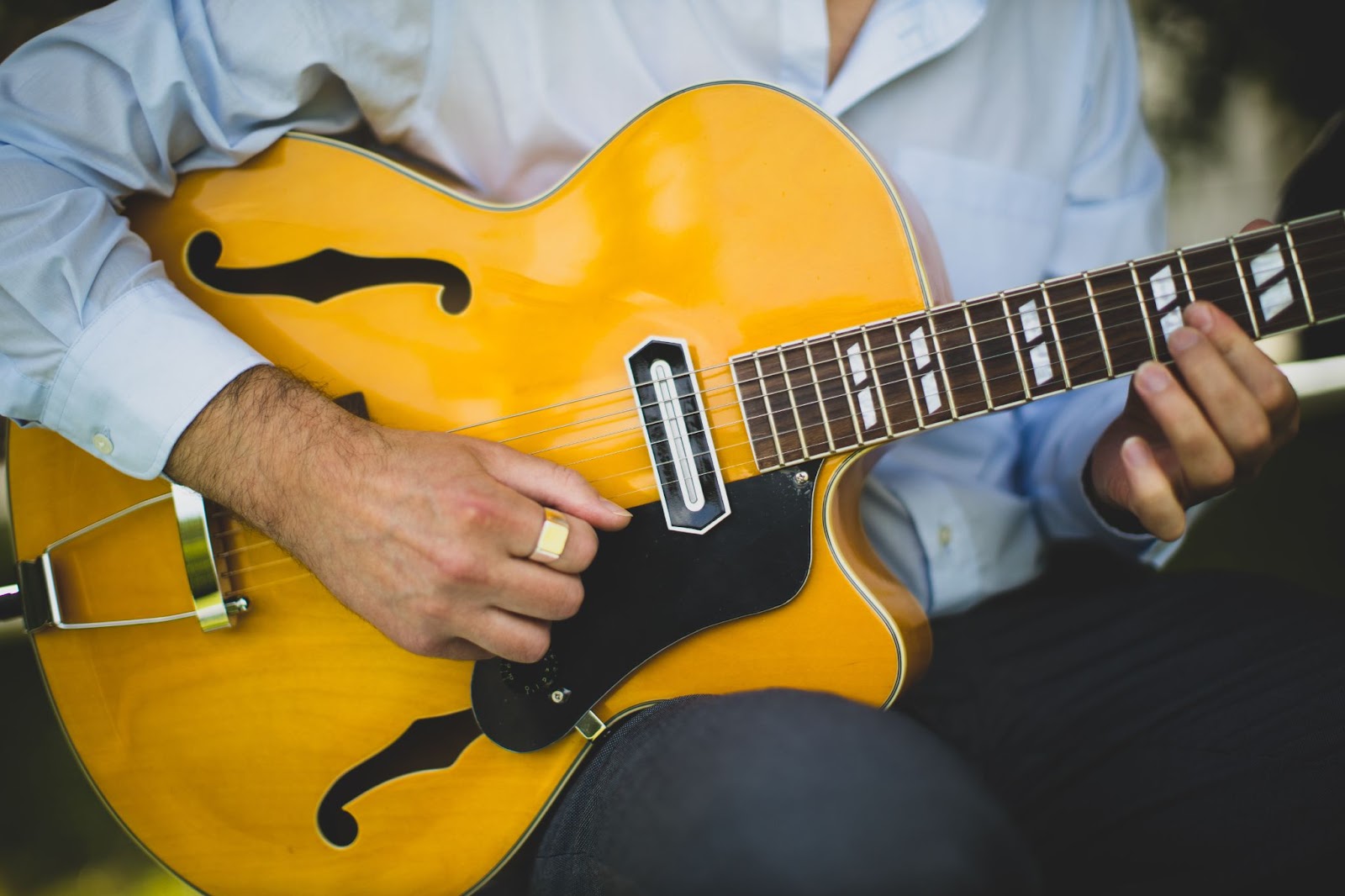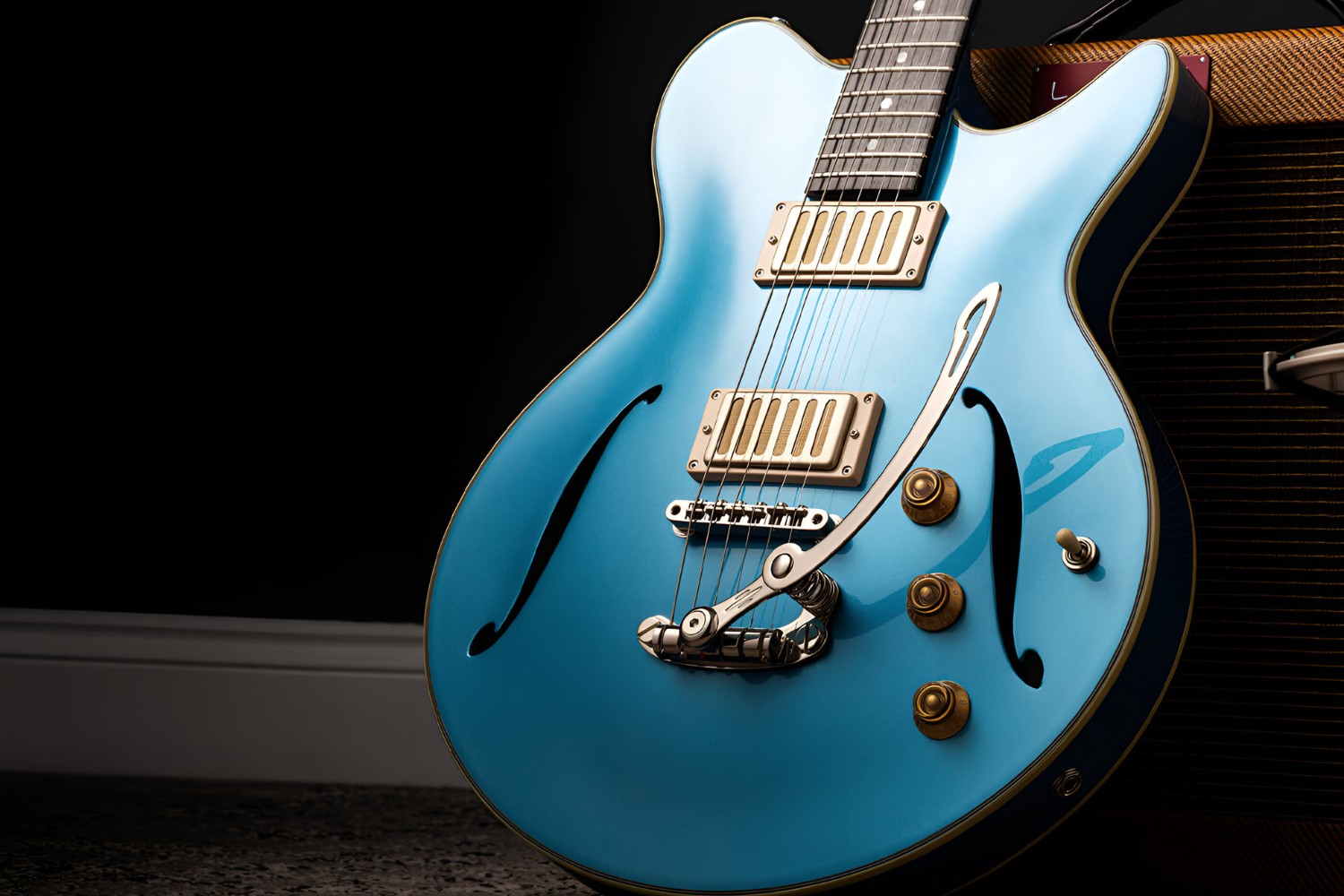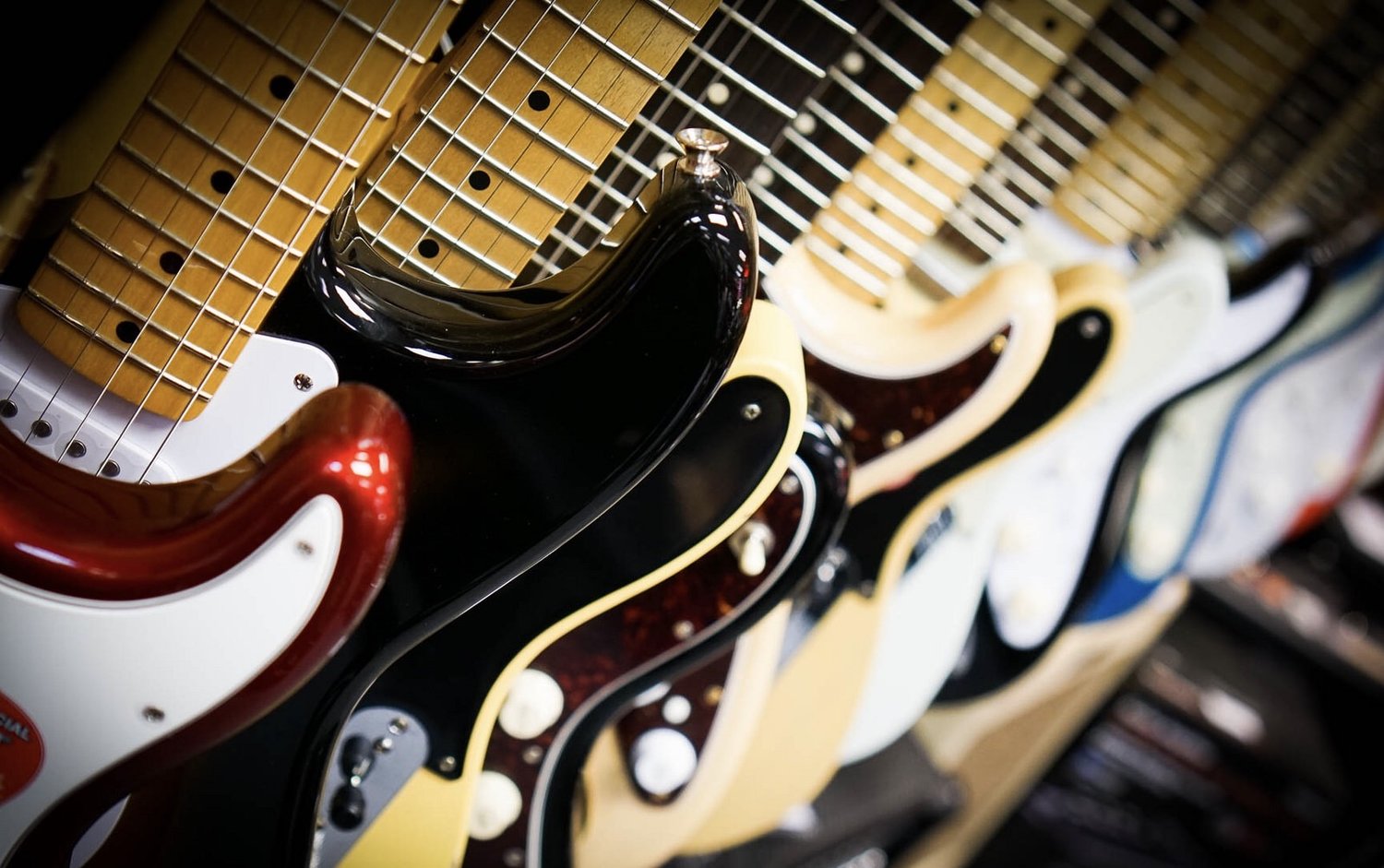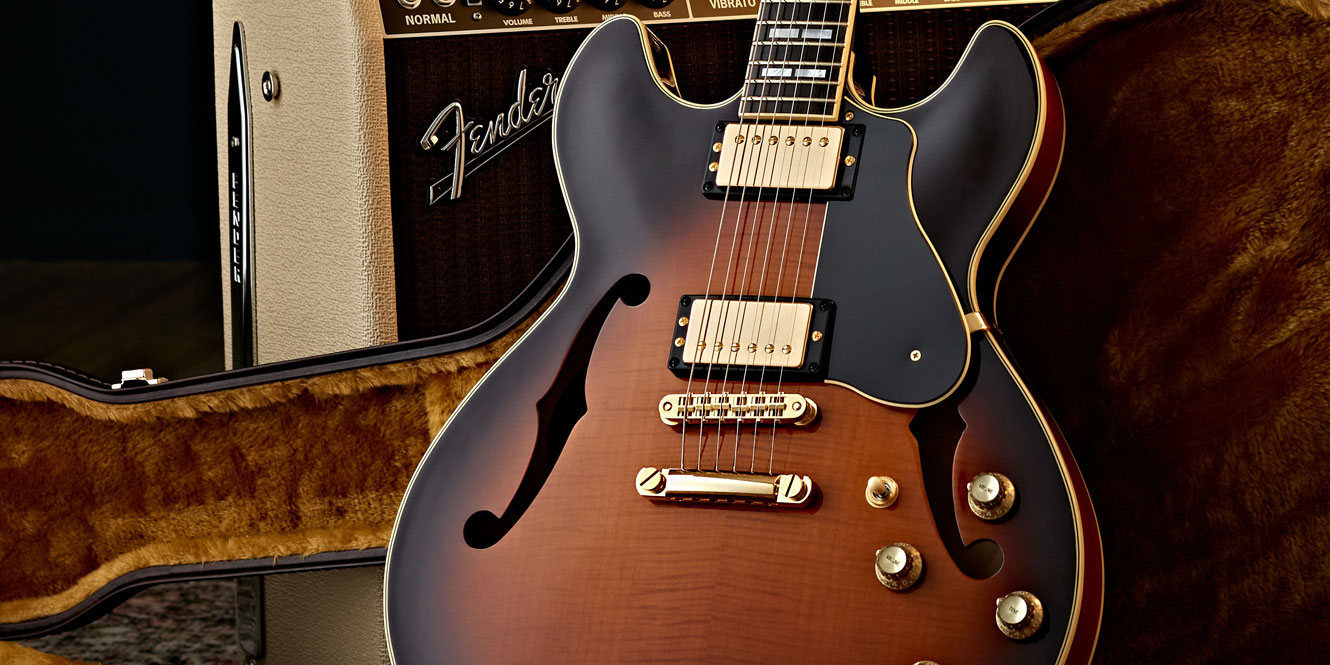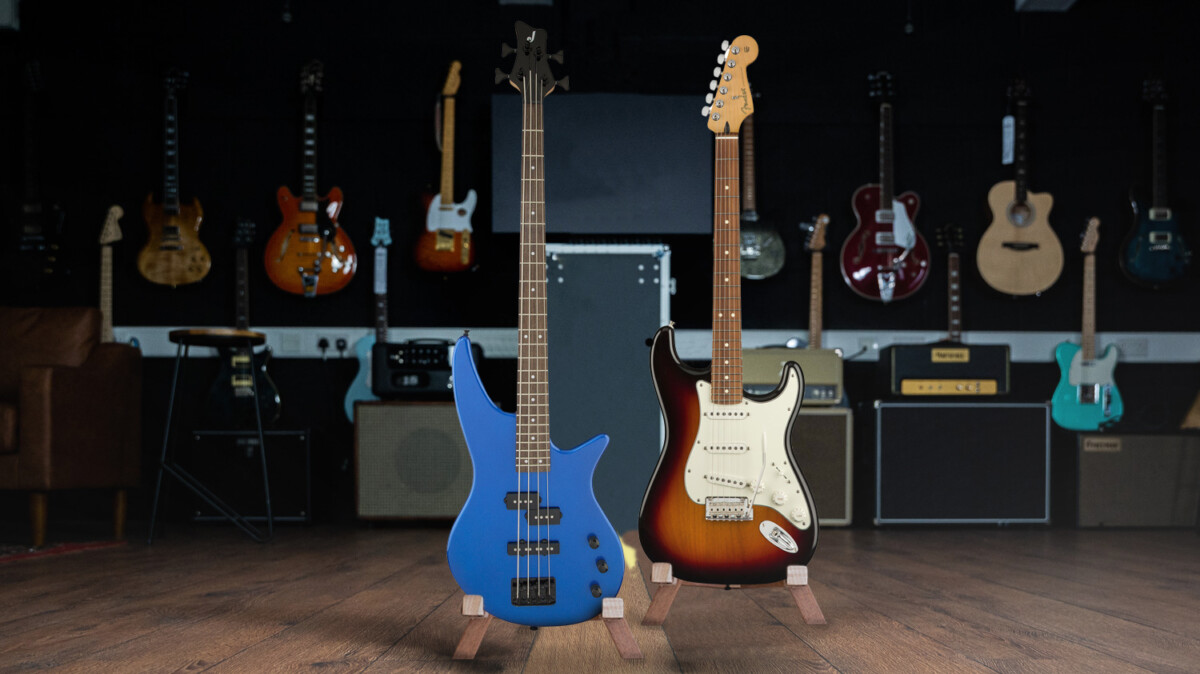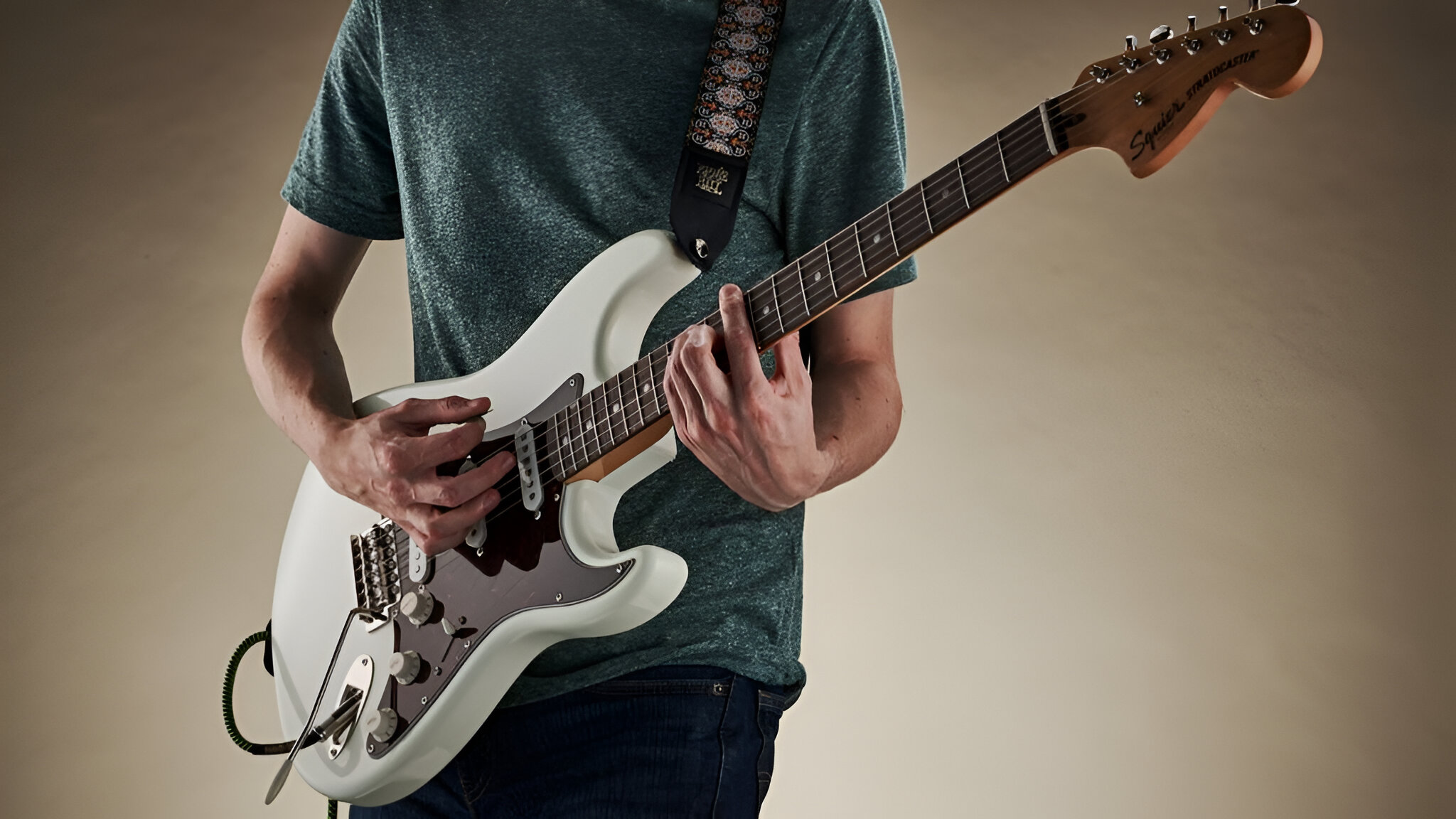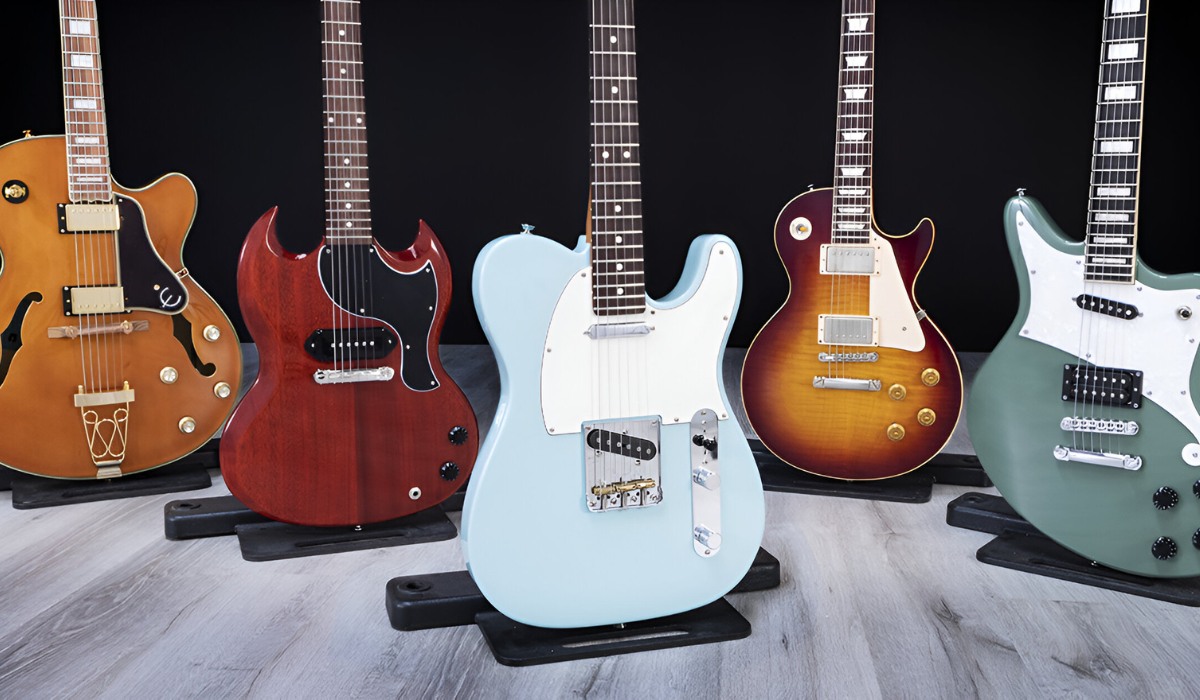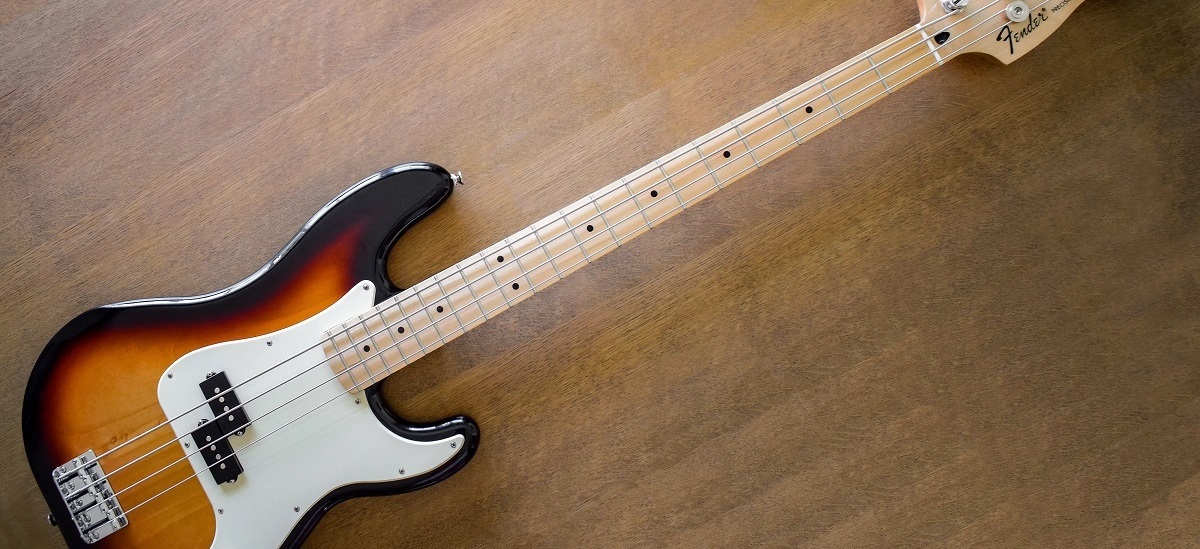Introduction
Are you ready to infuse your electric guitar playing with the soulful, improvisational spirit of jazz music? Playing jazz on the electric guitar is an exhilarating journey that allows you to explore complex harmonies, rich melodies, and expressive techniques. Whether you're a seasoned guitarist looking to expand your repertoire or a beginner eager to delve into the world of jazz, this guide will equip you with the essential knowledge and skills to embark on this captivating musical endeavor.
Jazz, with its origins rooted in the African American communities of New Orleans, has evolved into a diverse and influential genre that embraces individuality, creativity, and spontaneity. Unlike other musical styles, jazz encourages musicians to express themselves through improvisation, making each performance unique and deeply personal. As you venture into the realm of jazz on the electric guitar, you'll discover the freedom to interpret melodies, experiment with harmonies, and unleash your creativity in ways that transcend conventional musical boundaries.
In this comprehensive guide, we'll explore the fundamental aspects of playing jazz on the electric guitar, from understanding the essence of jazz music to honing your skills and developing your own signature style. You'll learn how to select the right equipment, master jazz chords and scales, internalize intricate rhythms, and ultimately carve out your place in the rich tapestry of jazz music. By the end of this journey, you'll be well-equipped to infuse your electric guitar playing with the distinctive flair and improvisational spirit that define the captivating world of jazz. So, grab your electric guitar, embrace the spirit of exploration, and let's dive into the enchanting realm of jazz music.
Understanding Jazz Music
Jazz music is a genre characterized by its rich history, diverse styles, and emphasis on improvisation. Rooted in the African American communities of New Orleans in the late 19th and early 20th centuries, jazz has since evolved into a multifaceted art form that has left an indelible mark on the global music landscape. At its core, jazz embodies freedom of expression, individuality, and the spirit of collaboration among musicians.
One of the defining features of jazz is its emphasis on improvisation. Unlike classical or pop music, where performances are often based on written compositions, jazz musicians frequently engage in spontaneous improvisation during live performances. This improvisational approach allows for a dynamic and interactive musical experience, with performers drawing inspiration from each other and responding in real time to the music being created.
Jazz encompasses a wide range of styles, from the early traditional jazz of the 1910s and 1920s to the innovative sounds of bebop, cool jazz, fusion, and contemporary jazz. Each style brings its own unique harmonic, rhythmic, and melodic characteristics, offering a vast palette for musicians to explore and interpret.
Harmony is another crucial element of jazz music. Jazz harmony often features complex chord progressions, extended chords, and altered chord tones, providing a rich harmonic backdrop for improvisation and musical expression. Additionally, jazz musicians frequently employ extended techniques, such as chord substitutions, reharmonization, and modal interchange, to create harmonic interest and variety within their performances.
Rhythm plays a central role in jazz, with syncopation, swing feel, and rhythmic flexibility serving as hallmarks of the genre. Jazz rhythms are often intricate and dynamic, inviting musicians to explore polyrhythms, irregular meters, and rhythmic accents that add depth and energy to the music.
As you delve into the world of jazz on the electric guitar, understanding the historical and musical underpinnings of jazz music will provide you with a solid foundation for your musical journey. Embrace the spirit of innovation, embrace the spirit of exploration, and let the captivating rhythms and harmonies of jazz music ignite your passion for the art form.
Choosing the Right Equipment
When venturing into the realm of jazz on the electric guitar, selecting the right equipment is crucial to achieving the desired tone and playability. While the electric guitar itself serves as the primary instrument, several other components contribute to shaping the overall sound and feel of your jazz performance.
First and foremost, the choice of electric guitar plays a significant role in defining your jazz sound. While various types of electric guitars can be used for jazz, many players gravitate towards hollow-body or semi-hollow body guitars for their warm, resonant tones. These guitars excel at producing the rich, full-bodied sound that complements the harmonic complexity of jazz music. Additionally, the use of flatwound strings, which offer a smooth feel and a mellow tone, is a popular choice among jazz guitarists.
Amplifiers also play a critical role in shaping the jazz guitar sound. Tube amplifiers, known for their warm and dynamic tonal characteristics, are favored by many jazz guitarists for their ability to deliver a rich, expressive sound. When selecting an amplifier for jazz, consider models that offer clean, transparent tones and the headroom necessary to accommodate the dynamic range of jazz playing.
Furthermore, effects pedals can be employed to enhance and personalize your jazz guitar sound. While jazz guitar traditionally emphasizes a clean, unadulterated tone, subtle effects such as reverb, delay, and compression can add depth and dimension to your playing without overshadowing the inherent qualities of the instrument and amplifier.
Equally important is the consideration of accessories such as guitar picks, straps, and cables. Opt for picks that provide a smooth attack and a warm tone, and select comfortable, adjustable straps to support your instrument during extended playing sessions. High-quality cables are essential for maintaining signal integrity and minimizing unwanted noise in your signal chain.
Ultimately, the right equipment for playing jazz on the electric guitar should complement your playing style and musical preferences while facilitating expressive, nuanced performances. By carefully selecting guitars, amplifiers, effects, and accessories that align with the sonic and tactile qualities you desire, you can craft a setup that empowers you to explore the captivating world of jazz music with confidence and creativity.
Learning Jazz Chords and Scales
Mastering jazz chords and scales is fundamental to developing a strong foundation for improvisation and harmonic exploration on the electric guitar. In jazz, chords extend beyond the traditional triads found in many other genres, encompassing complex voicings, extended chords, and altered tones that contribute to the genre’s rich harmonic palette. Similarly, jazz scales offer a diverse array of melodic possibilities, allowing for expressive and inventive improvisation.
One of the cornerstones of jazz guitar playing is the mastery of chord voicings that capture the essence of the genre’s harmonic language. While traditional major and minor chords form the basis of many musical styles, jazz guitarists frequently employ extended chords such as dominant 7th, major 7th, minor 7th, and diminished chords to create lush, sophisticated harmonies. Additionally, the use of chord inversions and voicings that emphasize upper chord extensions (9th, 11th, 13th) adds depth and color to jazz chord progressions.
Furthermore, jazz guitarists often explore chord substitutions and reharmonization techniques to infuse their playing with harmonic interest and complexity. By substituting chords within a progression or reinterpreting the harmonic framework of a song, players can introduce fresh perspectives and unexpected tonal colors into their performances.
On the melodic front, jazz scales form the basis for improvisation and soloing. While traditional major and minor scales are essential, jazz guitarists frequently delve into modes of the major scale, such as Dorian, Mixolydian, and Lydian, to craft captivating and evocative solos. Additionally, the harmonic minor and melodic minor scales, with their unique intervallic structures, offer intriguing melodic possibilities for jazz improvisation.
Moreover, the bebop scale, characterized by the addition of a chromatic passing tone to the traditional major scale, is a staple in jazz improvisation, infusing solos with a fluid, swinging feel. Jazz guitarists also explore the diminished and whole-tone scales, which contribute to the genre’s distinctive harmonic and melodic vocabulary.
As you embark on your journey into jazz chords and scales on the electric guitar, embrace the intricate voicings and evocative scales that define the genre’s harmonic and melodic landscape. By internalizing these essential elements, you’ll be well-equipped to navigate the rich tapestry of jazz music with confidence, creativity, and a deep understanding of its harmonic and melodic nuances.
Mastering Jazz Rhythms and Techniques
Developing proficiency in jazz rhythms and techniques is essential for capturing the dynamic and expressive qualities that define the genre. Jazz music is renowned for its intricate rhythms, syncopated patterns, and swinging feel, all of which contribute to its infectious energy and captivating groove. As you delve into the world of jazz on the electric guitar, mastering these rhythmic elements will elevate your playing and imbue it with the unmistakable spirit of jazz.
Jazz rhythms are characterized by their fluidity, complexity, and emphasis on swing feel. Swing, a rhythmic interpretation that involves uneven eighth notes and a sense of forward momentum, is a hallmark of jazz music. Developing a strong sense of swing feel is crucial for jazz guitarists, as it infuses their playing with a lively, propulsive energy that propels the music forward.
Syncopation, another key aspect of jazz rhythms, adds rhythmic tension and interest by accenting offbeats and unexpected rhythmic placements. Jazz guitarists often explore syncopated chordal and melodic patterns, contributing to the genre’s vibrant and unpredictable rhythmic landscape.
Additionally, jazz guitarists frequently employ techniques such as comping, which involves providing rhythmic and harmonic support as part of a larger ensemble. Comping techniques encompass chordal accompaniment, rhythmic punctuation, and interactive playing that complements the improvisations of other musicians.
Furthermore, the use of chord melody, a technique in which the guitarist simultaneously plays chords and melodies, is a hallmark of jazz guitar playing. By integrating chords and single-note lines, chord melody allows guitarists to create lush, harmonically rich arrangements that capture the essence of a full ensemble within a solo performance.
Exploring arpeggios, or broken chords, is another essential aspect of jazz guitar technique. Arpeggios provide a melodic and harmonic framework for improvisation, enabling guitarists to navigate chord changes with fluidity and expressiveness. Additionally, the incorporation of fingerstyle and hybrid picking techniques enhances the guitarist’s ability to articulate complex rhythmic and melodic ideas with precision and clarity.
As you immerse yourself in the world of jazz rhythms and techniques on the electric guitar, embrace the fluidity, dynamism, and expressive potential of jazz music. By mastering swing feel, syncopation, comping, chord melody, arpeggios, and various picking techniques, you’ll unlock a world of rhythmic and textural possibilities that will enrich your jazz guitar playing and bring it to life with infectious vitality.
Developing Your Own Jazz Style
As you progress in your exploration of jazz on the electric guitar, cultivating your own unique jazz style becomes a rewarding and transformative endeavor. Jazz music thrives on individuality, creativity, and personal expression, and developing a distinctive style allows you to leave an indelible mark on the genre while honoring its rich traditions. By embracing your musical identity and infusing it with the spirit of jazz, you can carve out a singular artistic voice that resonates with authenticity and passion.
One of the key components of developing your jazz style is listening to a diverse array of jazz guitarists and musicians. By immersing yourself in the recordings of jazz legends and contemporary innovators, you can absorb a wide spectrum of musical influences, techniques, and approaches. Pay close attention to the phrasing, tone, and improvisational language of different artists, and allow their artistry to inspire and inform your own musical journey.
Furthermore, experimentation is essential for honing your jazz style. Explore various chord voicings, scales, and melodic patterns, and seek out unconventional harmonic and rhythmic textures that resonate with your musical sensibilities. Embrace the spirit of improvisation, allowing your musical ideas to flow freely and organically as you navigate the rich harmonic and melodic landscape of jazz music.
Personal expression is at the heart of jazz, and finding your own voice on the electric guitar involves embracing your musical instincts and experiences. Draw inspiration from your life, emotions, and surroundings, infusing your playing with the depth and sincerity that stem from your personal narrative. By channeling your unique perspective into your music, you can create a profound and authentic connection with your audience.
Collaboration and interaction with fellow musicians also play a vital role in shaping your jazz style. Engage in jam sessions, ensemble playing, and musical dialogues that allow you to exchange ideas, learn from others, and contribute to the collective creativity of the jazz community. Embrace the spirit of musical camaraderie and openness, as these interactions will enrich your musical vocabulary and nurture the development of your individual jazz style.
Ultimately, developing your own jazz style on the electric guitar is a deeply personal and enriching journey. By immersing yourself in the diverse traditions of jazz, embracing experimentation and personal expression, and engaging in collaborative musical experiences, you’ll cultivate a style that reflects your artistic vision and resonates with the timeless spirit of jazz music.
Conclusion
Congratulations on embarking on the enriching journey of playing jazz on the electric guitar. Throughout this guide, we’ve delved into the essential elements of jazz music, explored the nuances of jazz chords and scales, and uncovered the intricacies of mastering jazz rhythms and techniques. By understanding the historical and musical underpinnings of jazz, selecting the right equipment, and honing your skills, you’ve taken significant strides toward embracing the captivating world of jazz music on the electric guitar.
As you continue to explore jazz on the electric guitar, remember that the heart of jazz lies in individuality, creativity, and personal expression. Embrace the diverse influences and techniques that resonate with you, and allow your musical journey to unfold with authenticity and passion. Whether you’re drawn to the warm resonance of hollow-body guitars, the vibrant complexities of jazz chords, or the infectious swing feel of jazz rhythms, your unique voice and style will enrich the ever-evolving tapestry of jazz music.
As you navigate the harmonic and melodic landscapes of jazz, remember that experimentation and collaboration are integral to your growth as a jazz guitarist. Engage in musical dialogues, draw inspiration from a wide spectrum of jazz artists, and infuse your playing with the depth and sincerity that stem from your personal narrative. By embracing the spirit of innovation and openness, you’ll carve out a distinctive artistic voice that resonates with the timeless spirit of jazz music.
So, pick up your electric guitar, immerse yourself in the captivating rhythms and harmonies of jazz, and let your musical journey unfold with creativity, authenticity, and an unwavering commitment to personal expression. Whether you’re crafting soulful melodies, engaging in dynamic improvisation, or collaborating with fellow musicians, the world of jazz on the electric guitar is a boundless realm of artistic exploration and sonic discovery.
May your musical odyssey be filled with inspiration, growth, and the joy of creating music that speaks to the heart. Embrace the spirit of jazz, honor its traditions, and let your unique jazz style shine brightly as you contribute to the rich and ever-evolving tapestry of this timeless genre.









